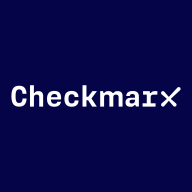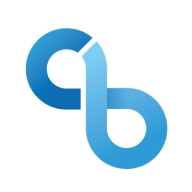

Checkmarx One and CloudBees compete in the software development security and DevOps categories, respectively. Checkmarx One seems to have the upper hand in security features, offering comprehensive scanning capabilities, while CloudBees excels in CI/CD flexibility due to its scalability and integration capabilities.
Features: Checkmarx One offers comprehensive scanning for various languages, including mobile development, and includes capabilities like SAST without needing code compilation, vulnerability pinpointing, and flow tracking to efficiently fix code issues. CloudBees excels in handling complex pipelines and offers advanced security features, extensive integration options, and automation, strongly supporting CI/CD processes.
Room for Improvement: Checkmarx One should work on reducing false positives, expanding language support, and enhancing integration with custom rules and dashboards, along with improving its dynamic application testing and licensing flexibility. CloudBees needs improvements in ease of use, addressing performance issues with infrastructure integration, and better plugin management.
Ease of Deployment and Customer Service: Checkmarx One provides various deployment options, including on-premises, public, and hybrid cloud. Technical support receives mixed reviews, though the expertise is generally praised. CloudBees also offers flexible deployment options but has occasional performance issues linked to infrastructure. Both products are generally rated positively for customer service, with Checkmarx particularly praised for expert assistance in certain regions.
Pricing and ROI: Checkmarx's pricing is high but justified by its security capabilities and early-stage code problem detection, offering good ROI by accelerating production timelines. However, its complex licensing model is a drawback. Despite being expensive, CloudBees is perceived as worth the cost due to its integration benefits and ability to deliver secure solutions quickly, contributing to substantial ROI by improving workflow efficiencies.
I would rate the stability of this solution a nine on a scale of 1 to 10 where one is low stability and 10 is high.
It could suggest how the code base is written and automatically populate the source code with three different solution options to choose from.
My experience with the initial setup of Checkmarx One is straightforward; it is not complex compared to other tools that I have tried.
| Product | Market Share (%) |
|---|---|
| CloudBees | 2.9% |
| Checkmarx One | 14.9% |
| Other | 82.2% |


| Company Size | Count |
|---|---|
| Small Business | 30 |
| Midsize Enterprise | 9 |
| Large Enterprise | 38 |
| Company Size | Count |
|---|---|
| Small Business | 1 |
| Midsize Enterprise | 3 |
| Large Enterprise | 17 |
Checkmarx One is an enterprise cloud-native application security platform focused on providing cross-tool, correlated results to help AppSec and developer teams prioritize where to focus time and resources.
Checkmarx One offers comprehensive application scanning across the SDLC:
Checkmarx One provides everything you need to secure application development from the first line of code through deployment and runtime in the cloud. With an ever-evolving set of AppSec engines, correlation and prioritization features, and AI capabilities, Checkmarx One helps consolidate expanding lists of AppSec tools and make better sense of results. Its capabilities are designed to provide an improved developer experience to build trust with development teams and ensure the success of your AppSec program investment.
CloudBees provides a highly scalable and secure platform that supports seamless integration and automation across multiple environments. It excels in managing Jenkins instances and offers flexible deployment options, enhancing efficiency for large teams.
CloudBees is recognized for its integration with Jenkins, SonarQube, and Ansible, allowing companies to leverage its robust automation capabilities for continuous integration and deployment. With its strong support for Docker and Kubernetes, teams benefit from streamlined code management and operational efficiency. Its scalable architecture, real-time feedback, and premium vendor support help manage large-scale applications and microservices. Despite its strengths, users report challenges with pipeline setup, service availability, and GUI accessibility, which suggest room for improvement in these areas.
What are the key features of CloudBees?In tech and software industries, companies implement CloudBees for managing complex CI/CD pipelines. Its integration with DevOps tools facilitates automation and workflow optimization. Industries with large teams managing thousands of microservices use CloudBees to maintain high availability, streamline processes, and ensure security compliance, driving efficient production workflows.
We monitor all DevSecOps reviews to prevent fraudulent reviews and keep review quality high. We do not post reviews by company employees or direct competitors. We validate each review for authenticity via cross-reference with LinkedIn, and personal follow-up with the reviewer when necessary.